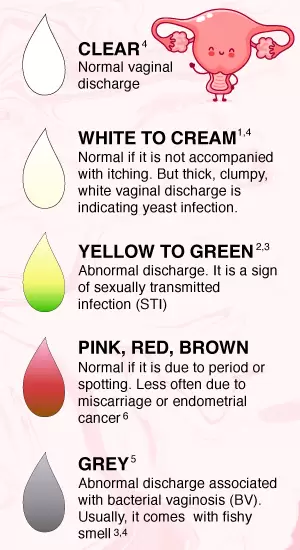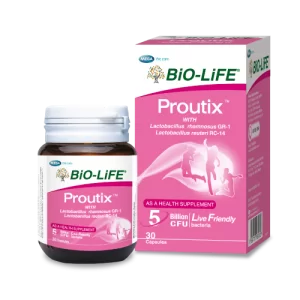
Vaginal Discharge: The Color Stain & What Does It Mean?
Mar 5, 2021
Introduction

Annually, 8th March has been marked as the International Women’s Day. In conjunction with that, let us have a girl talk about vaginal discharge.
Vaginal Discharge
It is a natural way for the vagina to clean and protect itself. The color, texture, and amount of vaginal discharge may differ due to hormonal influences.1 However, some appearance may be an alarming signal of underlying health conditions.
To figure out what is normal or not, check out the color stain on your panties!

Probiotics for Vaginal Health

Studies had shown, Lactobacillus rhamnosus GR-1 and Lactobacillus reuteri RC-14 can tackle and reduce the likelihood of vaginal infection. They help to restore vaginal microflora7 and make the available treatment more effective! 8,9
When to See Doctor?
When there is an unusual appearance accompanied with other vaginal symptoms, kindly make an appointment with your doctor for more accurate diagnosis. Remember, vagina is a big part of women’s reproductive system. Therefore, take a good care of it!
Happy International Women’s Day!

Proutix contains clinically proven probiotics strain, L. rhamnosus GR-1 and L. reuteri RC-14 for maintaining balance of microflora and improving women’s urogenital health.
References
- Khan, S. A., Amir, F., Altaf, S., & Tanveer, R. (2009). Evaluation of common organisms causing vaginal discharge. Journal of Ayub Medical College, Abbottabad : JAMC, 21(2), 90–93.
- Sherrard, J., Donders, G., White, D., & Jensen, J. S. (2011). European (iusti/who) guideline on the management of vaginal discharge, 2011. International Journal of STD & AIDS, 22(8), 421-429.
- Sherrard, J., Wilson, J., Donders, G., Mendling, W., & Jensen, J. S. (2018). 2018 European (IUSTI/WHO) International union against sexually transmitted infections (IUSTI) World Health Organisation (WHO) guideline on the management of vaginal discharge. International Journal of STD & AIDS, 29(13), 1258-1272.
- Spence, D., & Melville, C. (2007). Vaginal discharge. BMJ (Clinical research ed.), 335(7630), 1147–1151.
- Mohammed, L., Javed, M., Althwanay, A., Ahsan, F., Oliveri, F., Goud, H. K., Mehkari, Z., & Rutkofsky, I. H. (2020). Live Bacteria Supplementation as Probiotic for Managing Fishy, Odorous Vaginal Discharge Disease of Bacterial Vaginosis: An Alternative Treatment Option?. Cureus, 12(12), e12362.
- Endometrial cancer. (n.d.). Retrieved February 19, 2021, from https://www.acog.org/womens-health/faqs/endometrial-cancer
- Reid, G., Charbonneau, D., Erb, J., Kochanowski, B., Beuerman, D., Poehner, R., & Bruce, A. W. (2003). Oral use of Lactobacillus rhamnosus GR-1 and L. fermentum RC-14 significantly alters vaginal flora: randomized, placebo-controlled trial in 64 healthy women. FEMS immunology and medical microbiology, 35(2), 131–134.
- Anukam, K., Osazuwa, E., Ahonkhai, I., Ngwu, M., Osemene, G., Bruce, A. W., & Reid, G. (2006). Augmentation of antimicrobial metronidazole therapy of bacterial vaginosis with oral probiotic Lactobacillus rhamnosus GR-1 and Lactobacillus reuteri RC-14: randomized, double-blind, placebo controlled trial. Microbes and infection, 8(6), 1450–1454.
- Martinez, R. C., Franceschini, S. A., Patta, M. C., Quintana, S. M., Candido, R. C., Ferreira, J. C., De Martinis, E. C., & Reid, G. (2009). Improved treatment of vulvovaginal candidiasis with fluconazole plus probiotic Lactobacillus rhamnosus GR-1 and Lactobacillus reuteri RC-14. Letters in applied microbiology, 48(3), 269–274.



